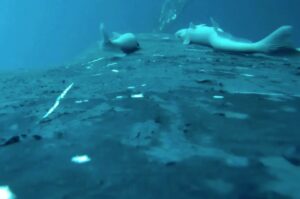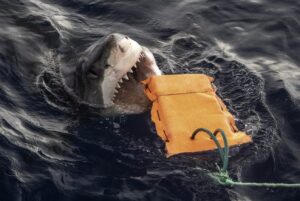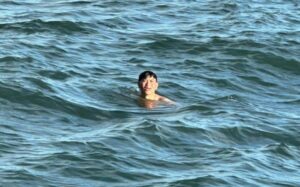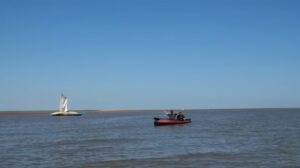Ocean rowing is becoming ever more popular, but kayaking an ocean remains a rare, extreme feat. This year, Cyril Derreumaux sought to do what only one other person had done before — to kayak alone across the Pacific, from California to Hawaii.
He set off from Monterey on June 21, and on September 20, after 91 days at sea, he beached his craft in Hilo, Hawaii.
Derreumaux is not opposed to rowing. He had already rowed from San Francisco to Hawaii in 2016. At the time, as part of a four-man crew, he broke what was then the speed record for the crossing. But kayaking it alone was something different.
“To…be in the middle of the ocean, on your own, and feel the waves, the rawness of nature, and the strength of the ocean,” Derreumaux told ExplorersWeb. “Something inside me just drew me to it.”

The route. Image: solokayaktohawaii.com
Inspired by Ed Gillet’s 1987 epic
The journey mimics Ed Gillet’s legendary 1987 crossing. Gillet was one of the inspirations for this project, and Derreumaux spoke to him a number of times before setting off.
Though the route was the same, Derreumaux admits that their journeys were incredibly different. Gillet used a six-metre, off-the-shelf Tofino double kayak. His effort was truly solo. He pushed off with just an SOS transmitter and a radio, which soon broke down. He navigated with a sextant and slept in the cockpit with a tarp draped over him.
By the end of his journey, he was hallucinating, all his supplies had run out, and he was eating toothpaste. His family suspected that he had died. Indeed, Gillet later wrote that if he had done the trip 10 times, he would have died on five of them.
Derreumaux does not think anyone will be able to replicate Gillet’s journey. He describes him as a trailblazer and a maverick.

Photo: CyrilDerreumauxAdventure/Facebook
Not an ordinary kayak
By comparison, Derreumaux had a custom-made carbon-fibre vessel with a sleeping cabin, a team of people advising him on land, and every piece of equipment you could ask for: GPS, VHF radio, satellite phones, Iridium trackers, and solar panels.
Yet his journey was not easy. Successfully reaching Hawaii was a huge feat. A number of people have died trying to cross this patch of water. Derreumaux himself had to be rescued after just a couple of days in 2021 when he first attempted the crossing. High winds and 4.5m swells damaged his kayak, which began to leak. He called the coast guard.

Photo: CyrilDerreumauxAdventure/Facebook
Derreumaux spent the year making improvements. He modified his sea anchor rig, installed a satellite communication system, and added both a manual bilge pump and side panels to keep water out of the cockpit. Then he spent five days on the coast of Santa Cruz training in high winds. He even slept more on the boat to get used to it and ensure better rest.
None of this assured the outcome, but he felt more confident when he first stepped into his boat and set off. He knew he had done everything in his power to succeed.
On June 21, he left amid a flotilla of paddlers, who came to wish him well. Then ensued three months of solitude. He had initially hoped to complete the 4,444km in 70 days, but difficult conditions and multiple challenges slowed his progress.

Photo: CyrilDerreumauxAdventure/Facebook
Early struggles
For the first few weeks, the winds pushed him in the wrong direction, and he struggled just to hold his position. Almost constant swells made him seasick. Luckily, after the first few weeks, the conditions eased and he was able to move forward.
He had to overcome a number of small issues. In week two, the tubing on his steering line broke and his compartment flooded. He had to create a drain system. Then the steering line became really stiff and he had to find a way to ease that.
Off the coast of California, it was foggy and cloudy all day, so it was hard for the solar panels to replenish his batteries. After 46 days, his water maker broke, so he had to use the manual one.

Photo: CyrilDerreumauxAdventure/Facebook
He had calculated he would need 6,000 calories a day, but already at the halfway point, he started rationing food. It was very clear he was not going to cover the distance in 70 days. Even with rationing, he wasn’t sure if he would make it. He didn’t want to have to start eating toothpaste like Gillet.
He decided to change his Hawaiian endpoint. Rather than land in Waikiki, he redirected to Hilo, which was six days closer. Only then did he have enough food to complete the distance.
Despite the challenges, Derreumaux says he loved the journey.
“The first two or three weeks were the hardest,” he said afterward, “but then you get more secure in your boat and in your skills. After that, it’s more mental and it seems like Groundhog Day. Eventually, I got into a pattern where I just enjoyed the day. Your mind just declutters and you’re completely free to have new thoughts.”






